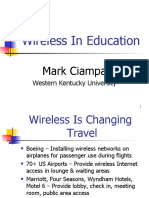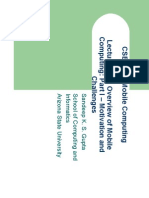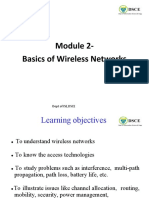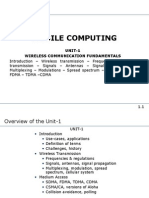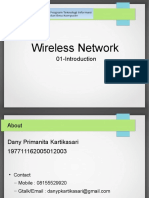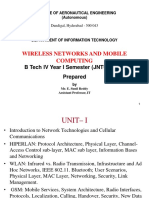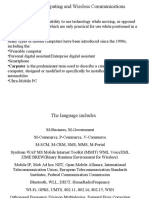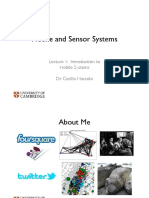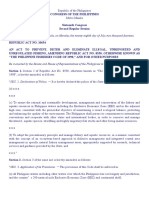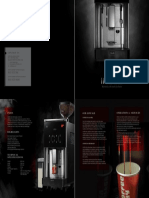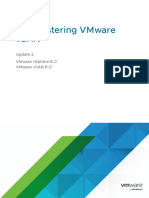0% found this document useful (0 votes)
83 views55 pagesMobile Computing: Introduction: Dr. Siba K. Udgata Department of Computer & Information Sciences University of Hyderabad
This document provides an introduction to mobile computing. It discusses the goal of wireless and mobile computing which is to allow people and devices to access information and communicate in any medium from any location at any time. It also outlines key technology trends such as the development of wireless infrastructure and miniaturization of devices. Examples of mobile computing applications in different environments like the home, on the move, on the road, and for disaster recovery are presented. The course outline covers topics in wireless networks, mobile applications, and other issues related to mobile and wireless computing.
Uploaded by
Venky VenkateshCopyright
© Attribution Non-Commercial (BY-NC)
We take content rights seriously. If you suspect this is your content, claim it here.
Available Formats
Download as PPT, PDF, TXT or read online on Scribd
0% found this document useful (0 votes)
83 views55 pagesMobile Computing: Introduction: Dr. Siba K. Udgata Department of Computer & Information Sciences University of Hyderabad
This document provides an introduction to mobile computing. It discusses the goal of wireless and mobile computing which is to allow people and devices to access information and communicate in any medium from any location at any time. It also outlines key technology trends such as the development of wireless infrastructure and miniaturization of devices. Examples of mobile computing applications in different environments like the home, on the move, on the road, and for disaster recovery are presented. The course outline covers topics in wireless networks, mobile applications, and other issues related to mobile and wireless computing.
Uploaded by
Venky VenkateshCopyright
© Attribution Non-Commercial (BY-NC)
We take content rights seriously. If you suspect this is your content, claim it here.
Available Formats
Download as PPT, PDF, TXT or read online on Scribd
/ 55





















